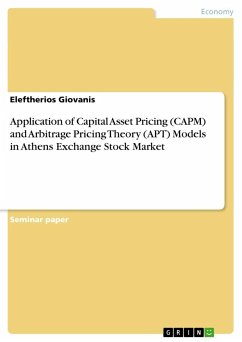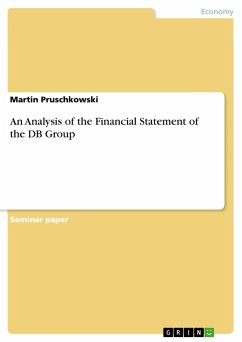
Integrating Earnings Forecasts, Valuation, and Return Prediction
A Unified Framework

PAYBACK Punkte
46 °P sammeln!
This book addresses equity (enterprise) valuation and provides practical tools for investors and analysts. It presents a unified framework for forecasting future earnings, estimating intrinsic values, and deriving a proxy for expected returns. The author offers indicators of temporary mispricing and expected returns to investors in real time.Each chapter is connected by a central idea: the value of equity and forecasts of future earnings are intrinsically linked in a simple, linear fashion. In line with long-standing capital market practices, the key to implementation lies in using benchmark i...
This book addresses equity (enterprise) valuation and provides practical tools for investors and analysts. It presents a unified framework for forecasting future earnings, estimating intrinsic values, and deriving a proxy for expected returns. The author offers indicators of temporary mispricing and expected returns to investors in real time.
Each chapter is connected by a central idea: the value of equity and forecasts of future earnings are intrinsically linked in a simple, linear fashion. In line with long-standing capital market practices, the key to implementation lies in using benchmark industry averages of valuation parameters to assess an individual company within its industry. Importantly, all relevant industry-level valuation parameters are estimated simultaneously within the model framework.
This results in a cohesive system for forecasting one-year-ahead earnings, valuing equity, and predicting returns all within a unified framework. This approach stands in contrast to traditional discounted cash flow (DCF) methods, where investment practitioners typically forecast future cash flows (dividends or earnings) and estimate the discount rate separately.
The book appeals not only to academics, but also provides practical insights for investment professionals, including fund managers engaged in stock-picking, business managers involved in M&A and IPO activities, and corporate managers making capital budgeting decisions.
Each chapter is connected by a central idea: the value of equity and forecasts of future earnings are intrinsically linked in a simple, linear fashion. In line with long-standing capital market practices, the key to implementation lies in using benchmark industry averages of valuation parameters to assess an individual company within its industry. Importantly, all relevant industry-level valuation parameters are estimated simultaneously within the model framework.
This results in a cohesive system for forecasting one-year-ahead earnings, valuing equity, and predicting returns all within a unified framework. This approach stands in contrast to traditional discounted cash flow (DCF) methods, where investment practitioners typically forecast future cash flows (dividends or earnings) and estimate the discount rate separately.
The book appeals not only to academics, but also provides practical insights for investment professionals, including fund managers engaged in stock-picking, business managers involved in M&A and IPO activities, and corporate managers making capital budgeting decisions.












